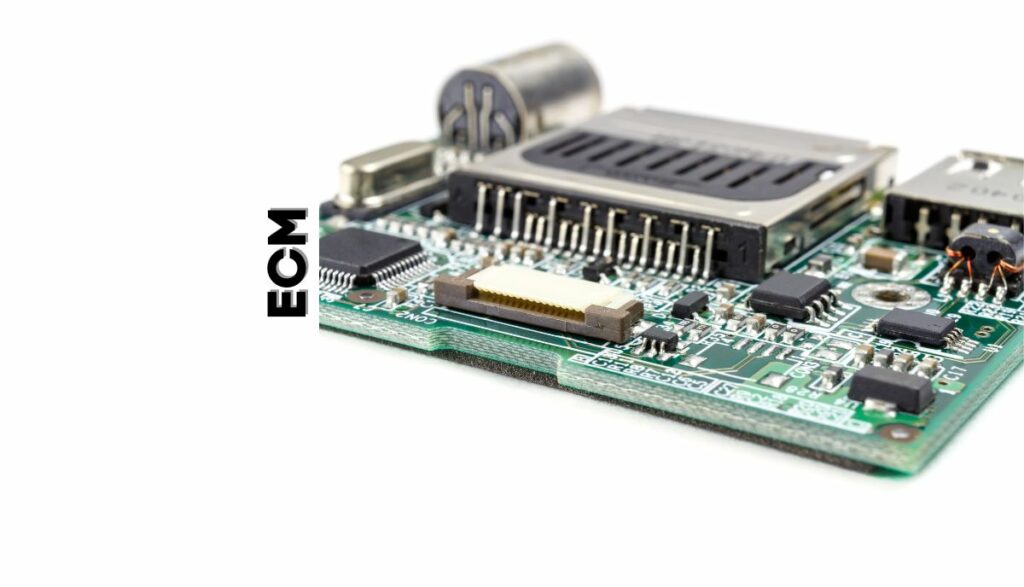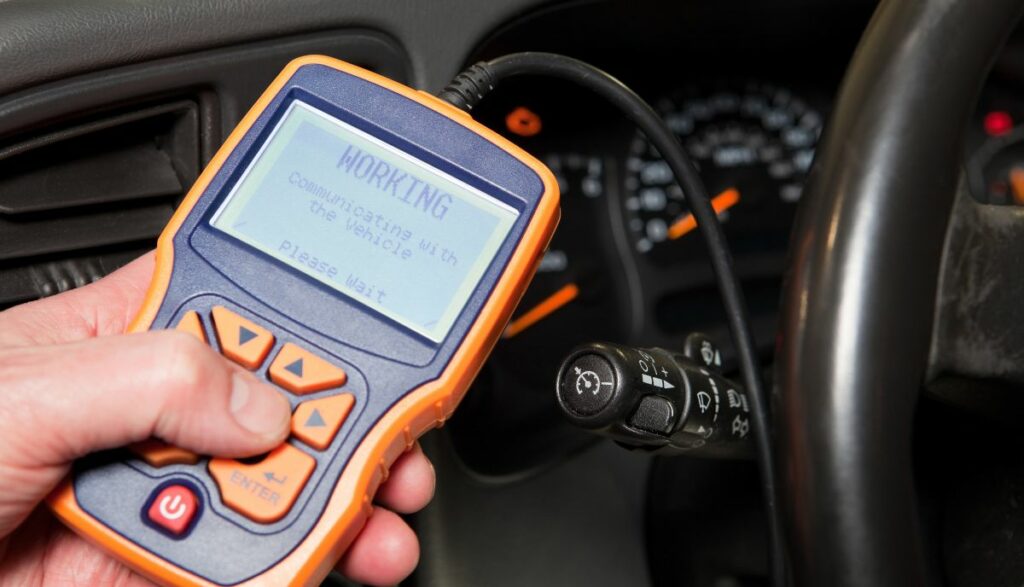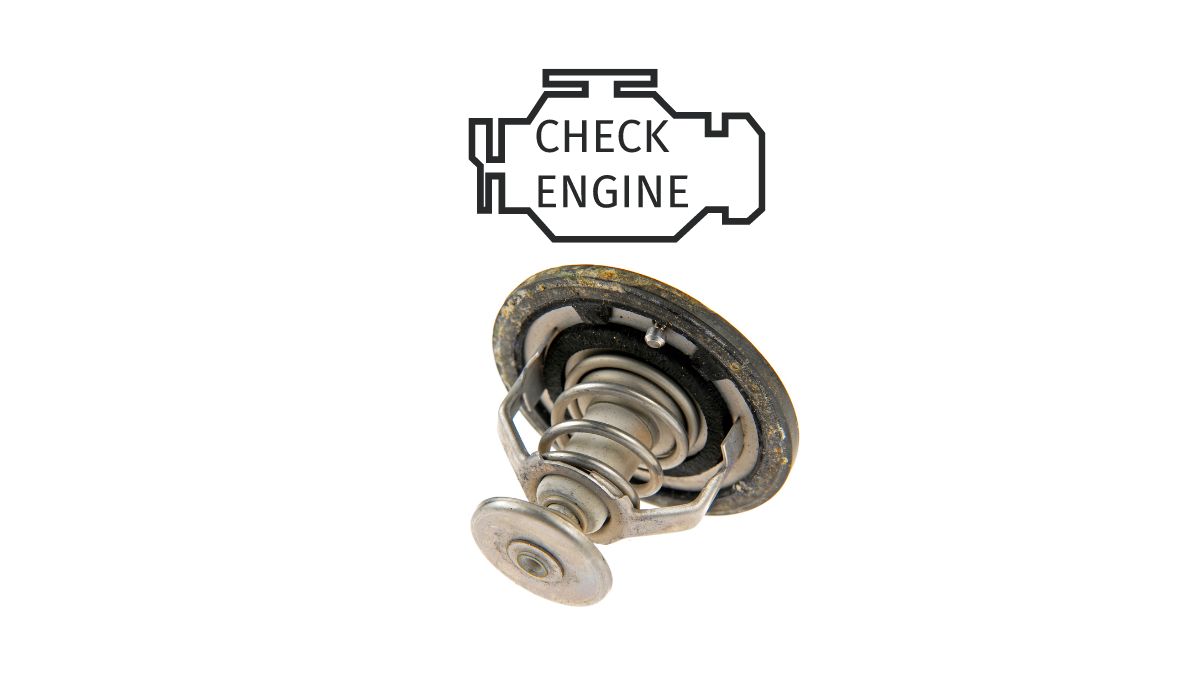According to Study Finds, 47 percent of Americans are late to important events because their vehicles malfunction, which is not surprising because the survey found that one in three Americans ignore the ‘Check Engine’ light while driving.
From the findings on reviews.com, it looks like 36.1 percent of drivers will visit a mechanic within the first week when they see the ‘Check Engine’ light, while 29.6 percent wait one month to a year before taking action.
This trend is dangerous because a bad thermostat can destroy your engine. Some people doubt a thermostat’s ability to trigger the ‘Check Engine’ light. This is because the thermostat manages the engine temperature.
On the other hand, the ‘Check Engine’ light typically appears in response to malfunctions related to the engine and emissions control systems. However, that assumption fails to appreciate the wide-ranging consequences a defective thermostat attracts.
How Does The Thermostat Affect Engine Temperature Regulation?
Cars have coolant, a substance that collects heat as it flows through the engine. The experts at Samarins have noted that manufacturers include radiators in the cooling system because they accept the coolant and cool it using a fan and air from the exterior.
This allows the coolant to absorb more heat from the engine. If all goes according to plan, the cooling system will keep the engine within normal operating parameters (194 – 221 degrees F). The thermostat keeps an eye on the temperature.
Ultimately, the engine needs the heat. In fact, The Environmental Protection Agency and Energy Department argue that cars lose 12 percent of their fuel efficiency when temperatures plummet.
However, the engine will lose power if you allow temperatures under the hood to exceed the standard operating parameters. This is where the thermostat comes into play. The device opens a valve and allows the coolant to flow once temperatures cross a specific threshold.
Each thermostat has a particular temperature that causes the valve to open. The thermostat will close once temperatures fall. This stops the coolant flow, allowing the engine to retain the appropriate amount of heat. If the coolant continues to flow, the temperature will drop below acceptable levels. A thermostat prevents both extremes (dangerously high or inefficiently low temperatures).
How Engine Control Modules Monitor And Respond To Temperature Changes?

The ECM is the beating heart of your car. It performs various functions that allow the engine to run, including:
- The ECM works with the mass airflow, oxygen, and air-fuel sensors to regulate the air/fuel ratio.
- The ECM uses the crankshaft and camshaft sensors to track the engine’s speed of rotation.
- The ECM can use the variable valve timing system to increase or decrease the fuel economy by determining when to open the valves in the engine.
- The ECM plays a role in the ignition timing. This will also influence the fuel economy (and the power).
The Engine Control Module performs so many tasks that FIXD expects the ‘Check Engine’ light to blink whenever this component fails. But how does the engine temperature fit into this equation?
The ECM manages the internal combustion process. That means controlling the amount of fuel and air in the mixture. You don’t want too much of the mixture or too little. ECU Testing has identified several variables the ECU must juggle to ensure a successful combustion. They include the air pressure, fuel temperature, engine pumping efficiency, and, most notably, the engine (and coolant) temperature.
The ECU has more difficulty maintaining the correct mixture ratio in a cold engine because the petrol is less likely to vaporize. Cold water can contaminate the fuel system, freezing in the winter and disrupting the combustion process.
Additionally, this paper from Philip Shipway, Andrew Roberts, and Richard Brooks (Energy Conversion and Management) has highlighted the inefficiency associated with cold starts. The ECM can trigger the ‘Check Engine’ light because of temperature changes that disrupt combustion.
The Interaction Between The Thermostat And Temperature Sensor
- Fossil fuel cars have an engine coolant temperature sensor.
- The ECT sensor tracks the engine temperature. The ECM uses this information to ensure the engine is running at an optimal temperature.
- According to Ishfaque Ahmed (Department of Automotive Software Engineering, Technische Universiteit Chemnitz), you find the engine coolant temperature sensor in the thermostat housing. Ahmed’s paper includes a picture of the sensor and its components.
- Because of the ECT sensor, the thermostat knows when to open (to release the coolant) and close (to restrict the coolant flow).
- The resistance in ECT sensors with a negative temperature coefficient goes down as the temperature increases. This type is the most popular.
- The voltage and resistance in ECT sensors with a positive temperature coefficient increase with the temperature.
How Inaccurate Temperature Readings Might Trigger A Warning?
The temperature sensor does not perform its functions in a vacuum. It transmits the information it collects regarding the engine and coolant temperature to the ECM. The ECM uses that data to manage the air/fuel mixture, transmission shifting, ignition timing, variable valve timing, and more.
Unfortunately, temperature sensors are not perfect. They can fail for various reasons, including:
- Loose connections.
- Frayed wiring.
- Corroded terminals.
- Overheating
- Short circuit.
- Bad Electrodes.
Symptoms of a bad engine control temperature sensor include:
- The engine will overheat.
- The exhaust will eject black smoke (Rich air/fuel mixture).
- Fluctuating temperature gauge.
- Higher idle speed.
- Poor fuel economy.
- The cooling fan may stop working.
- The car may refuse to start.
- The engine will lose power.
A faulty temperature sensor is problematic because it cannot track the engine and coolant temperature. The device will send false information to the computer, disrupting its fuel calculations and timing and introducing instabilities to the combustion process. Eventually, the ECM will trigger the ‘Check Engine’ light to let you know something has gone wrong.
How A Stuck-Open Thermostat Can Impact Efficiency?
The vehicle’s computer keeps an eye on the engine temperature. A hot engine will shut down, while a cold one will refuse to start. Hot engines manifest because the thermostat is stuck closed. If the component sticks in the open position, the opposite will happen.
Coolant will flow continuously, preventing the engine from attaining optimal operating temperatures. If the weather is freezing, a thermostat stuck-open to produce an inefficient engine with incomplete combustions because the coolant keeps stealing the heat. The engine can’t get hot enough.
The result is unburned gasoline bleeding into the piston rings and crankcase to dilute the oil. This will trigger the ‘Oil’ and ‘Check Engine’ lights due to low oil pressure and unsatisfactory combustions.
Connection Between Inefficient Temperature Control And The Check Engine Light
The ‘Check Engine’ light is typically concerned with variables that affect combustion. As such, it appears because of the following:
- A missing gas cap.
- A loose gas cap.
- Dirty, corroded, defective, or dead oxygen sensors.
- Bad spark plugs.
- A dead mass airflow sensor.
A broken thermostat is part of that list of variables because the part regulates the engine’s temperature. The engine temperature is vital to the combustion process. The engine cannot be too cold or too hot.
In both cases, the ECT sensor will warn the computer about the extreme temperatures, triggering the ‘Check Engine’ light, especially when the engine temperature (directly or indirectly) destabilizes the combustion process.
Common DTCs Related To Thermostat Problems
DTC stands for ‘Diagnostic Trouble Codes.’ These are engine fault codes. A mechanic can retrieve them using the onboard diagnostics systems. The codes will tell you why the vehicle has malfunctioned.
While you can access these codes yourself, a layperson is more likely to misinterpret the diagnostic trouble codes. If you misunderstand these codes, you will misdiagnose your vehicle and waste money on ineffective solutions.
The fault code that indicates thermostat problems is ‘DTC P0128.’
How Specific Codes Can Trigger A Check Engine Light?
DTC P0128 appears when the engine fails to reach the correct operating temperature within a specific duration. This can happen because the thermostat is faulty or stuck open. It can also originate from a defective temperature sensor.
This code can trigger the ‘Check Engine’ light because the computer has realized from the temperature sensor’s data that the coolant and engine temperature are too low.
Step-By-Step Guide To Diagnosing A Check Engine Light Related To The Thermostat
- Test the thermostat. A faulty thermostat will attract the same symptoms as every other factor that causes overheating. You can’t prove those symptoms are to blame until you take the thermostat out and test it.
- Does it open in hot water? Do you see corrosion? What do the multimeter readings say? If the thermostat fails these tests, replace it.

- If you don’t have the skill to retrieve and test the thermostat, acquire an OBD2 tool. Connect it to the OBDI port. Does the scanner show the P0128 error code? The scanner tool will reveal the faulty part.

